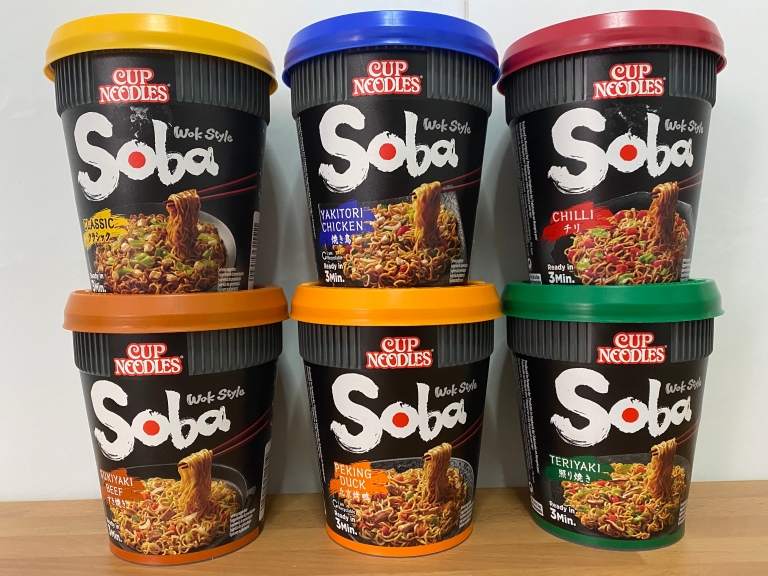
How do European yakisoba flavors satisfy a Japanese palate?
Cup Noodle is one of Japan’s top instant noodle brands, but it’s pretty popular the world over too. For example, did you know that in Europe, Cup Noodle (or “Cup Noodles” as it’s known there) actually sells a yakisoba variety that’s not available anywhere else? Our Japanese-language reporter Ikuna Kamezawa–who is currently busy testing out Japanese food in Spain–happened to spot them at a local supermarket and just had to try them out.
Altogether she found six different flavors, so she decided to use her distinctively Japanese point of view to compare them. Will they live up to her expectations? Let’s find out!
First off, the makeup of these cups was pretty simple: each one contained a cup with a lid, noodles and toppings, and a sauce packet.
She purchased each one for 1.45 euros, which is about 188 yen or US$1.67.
Ikuna actually saw quite a lot of instant yakisoba on the shelves at the supermarket, some even made by local companies, so she guessed that yakisoba was pretty popular in Europe. Naturally, though, the variety of options wasn’t nearly as wide as in Japan.
She was further surprised that this instant yakisoba came in a tall cup rather than a wide cup. In Japan, instant yakisoba, like UFO Yakisoba and Peyang, usually come in flat containers that are either round or square. Ikuna thought perhaps the change in style was due to the shelf sizes at the supermarket, though she couldn’t say for sure.
The cups did come with the standard water-draining lid, but it got super hot with the hot water and had a tendency to fall off, so Ikuna had to bite the bullet and try to hold it on in order to pour the water out. That gave her an appreciation for the instant noodle companies that really thought through their cup design
After analyzing the containers themselves, Ikuna began her taste test. Just like when she ranked European Cup Noodle flavors, she decided to give each flavor of Cup Noodle a score of one to ten based on how she liked it. So without further ado, let’s see which ones scored the highest!
1. Classic Flavor
Assuming this was the standard among Yakisoba flavors, Ikuna thought it was best to start with this one.
The toppings seemed pretty similar to UFO Yakisoba and included cabbage and…tofu?! That’s pretty unusual for yakisoba in Japan.
The sauce was a jet black, stickier variety.
Still, it was pretty good!!
Each cup yakisoba brand in Japan has its own “super thick sauce” version, and this felt like one of those. It was good enough that Ikuna thought it would get a seal of approval from any Japanese person. The only thing Ikuna had reservations about was the fact that the sauce was pretty sweet, though it did have a little spice to it. By the way, the pieces of toppings she’d thought were tofu were actually chicken.
Total score: 7/10.
2. Peking Duck
Ikuna had started with the reassuring “Classic” flavor, so now she felt she had the courage to try the most intimidating flavor: Peking Duck.
The noodles came with two kinds of mystery meat, and looking at the ingredients, duck meat was one of the components, along with some chicken fat for good measure.
Right away, this yakisoba smelled strongly of Chinese food.
…And Ikuna did not like it.
Not that the flavor was bad, per se, because it did sort of taste like Peking Duck sauce. But Ikuna doesn’t particularly like the flavor of Peking Duck sauce, and this yakisoba–which is not even a little bit like yakisoba–did not suit her palate at all.
Total score: 2/10.
3. Yakitori Chicken
The yakitori, or grilled chicken, variety actually sounded pretty tasty so Ikuna decided to use this one to cleanse her palate.
It also had some kind of white mystery meat, cut into cubes. Possibly chicken? Who could say?
Surprisingly, it really did taste like yakitori!
The flavor was really close to the sauce used when grilling chicken in Japan, but it also tasted a little bit like Thai food, like grilled chicken she ate once at a food stall in Thailand. Either way, it definitely tasted like grilled chicken!
The meat was actually pretty firm, and the vegetables quite crunchy. Ikuna was impressed by how much individual personality each cup had.
Total score: 6/10.
4. Teriyaki
Ikuna suspected differentiating between the Yakitori flavor and the Teriyaki flavor would be quite difficult, so she decided to try this one right after the yakitori one.
The Teriyaki flavor came with no meat, but it did have shiitake mushrooms.
It turned out to be totally different from the Yakitori flavor!
It had a really sharp ginger flavor to it, like the popular Japanese dish, ginger pork. It was tasty! Ikuna personally really liked it. Her only concern was that she wasn’t sure if that could really be called “teriyaki” or not.
Total score: 7/10.
5. Sukiyaki Beef
Ikuna also wondered whether this one would stand out from the others, so she picked it to try next.
It contained lots of beef-like meat pieces, which is something you don’t see very often in Japanese cup noodles.
When she looked closely, Ikuna even saw bok choy in there! What dedication to the craft!
Though whether or not the flavor of this cup yakisoba was anything like sukiyaki was debatable, Ikuna had to admit it had a very beefy flavor. The thing that most impressed her was that the Yakitori, Teriyaki, and Sukiyaki flavors all tasted completely different, despite all those dishes using many of the same ingredients in Japan. She was also impressed that Europeans would faithfully distinguish between those flavors.
Total score: 5/10.
6. Chili
Ikuna had a slightly bad feeling about the “Chili” Cup Noodle Soba.
She worried that all of those little red pieces were habanero peppers and that she was going to die while eating this. However…
It was good! Really good!
It was really pleasantly spicy while maintaining the integrity of the classic yakisoba base. It had a good kick, the kind that sits on your tongue for a bit like the spicy Korean-style Shin Ramen, and Ikuna liked it even better than Peyang’s Extra Spicy Yakisoba. For Ikuna, who had been having a hard time finding spicy food in Europe, this was a precious commodity.
Total score: 8/10.
In conclusion, the final rankings are as follows:
1. Chili – 8 points
2. Classic – 7 points
Yakitori – 7 points
4. Teriyaki – 6 points
5. Sukiyaki – 5 points
6. Peking Duck – 2 points
In the end, though some flavors had Ikuna scratching her head a bit, she’s glad she tried them. By the way, European supermarkets also sell the same flavors in bag form, though they no longer become Cup Noodle at that point, so if you find yourself wanting a taste of Japan in Europe, definitely give them a taste yourself!
Images © SoraNews24
● Want to hear about SoraNews24’s latest articles as soon as they’re published? Follow us on Facebook and Twitter!
[ Read in Japanese ]

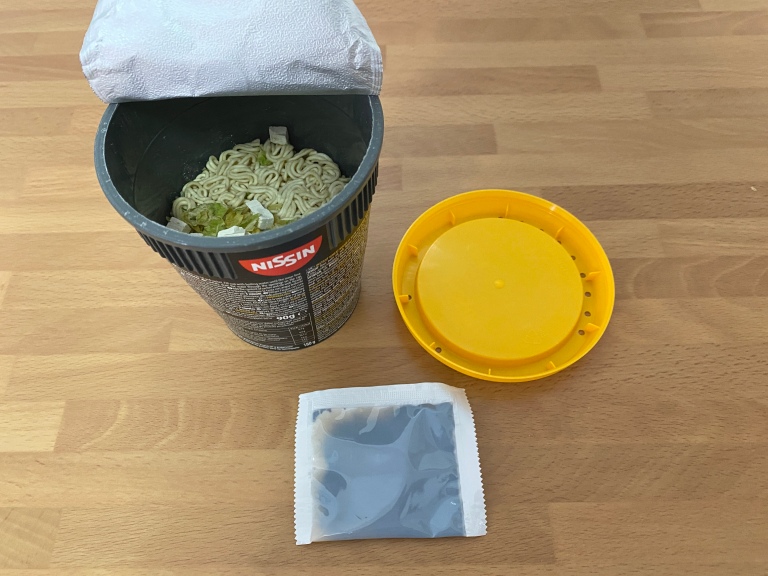
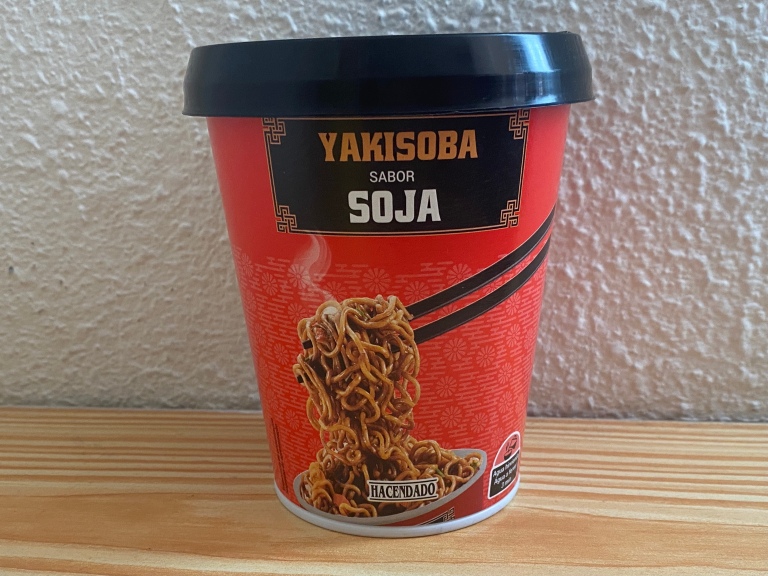
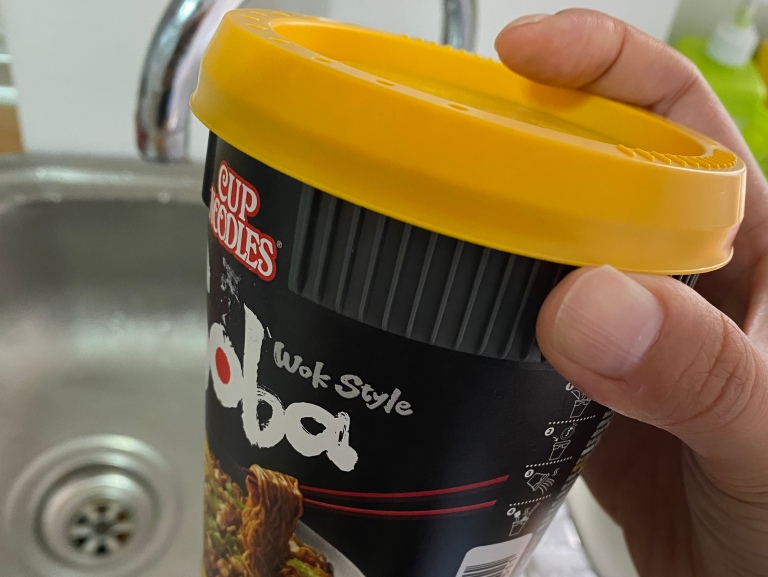
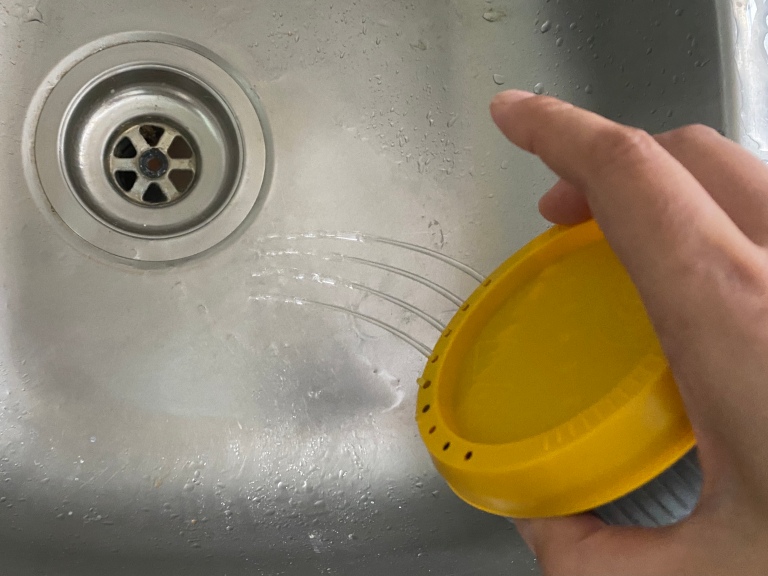
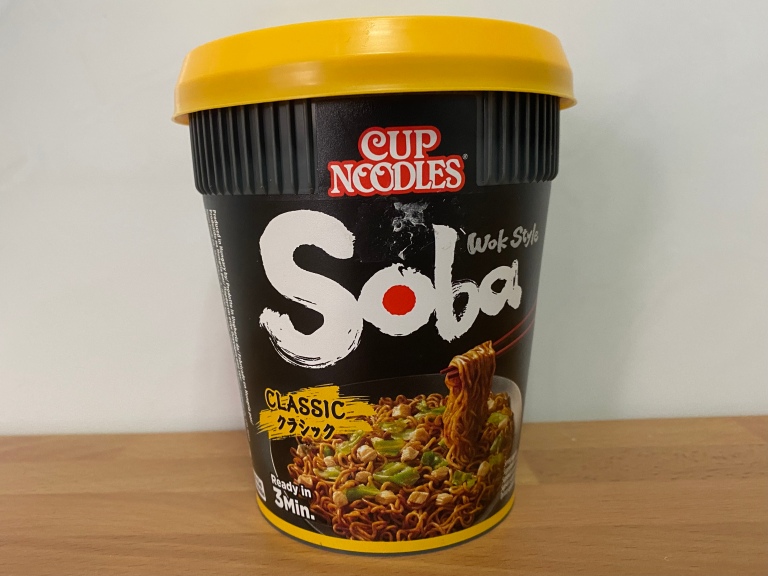
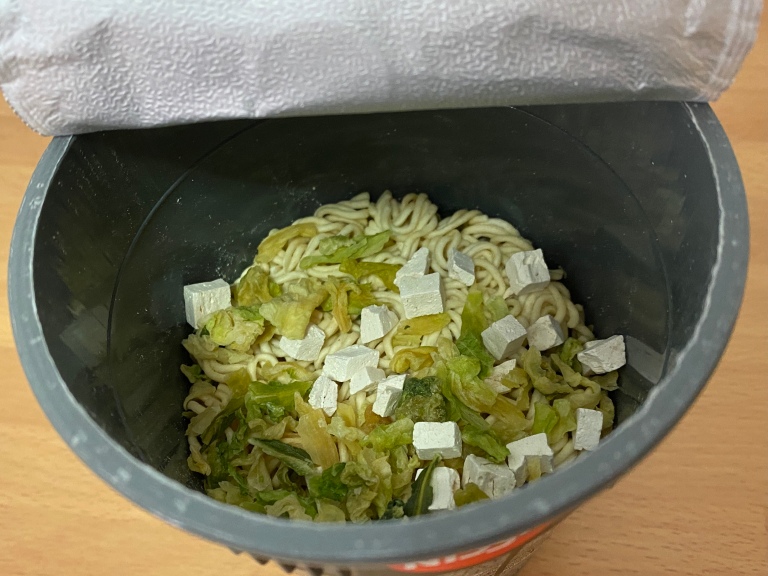
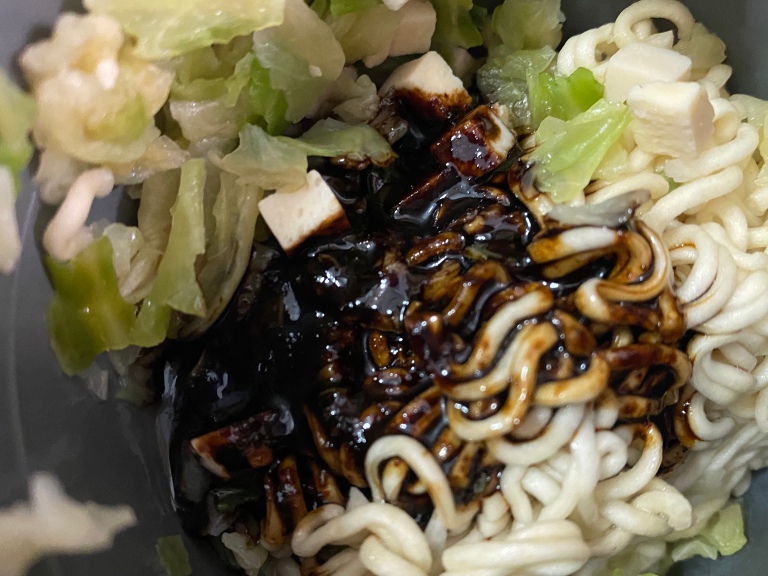
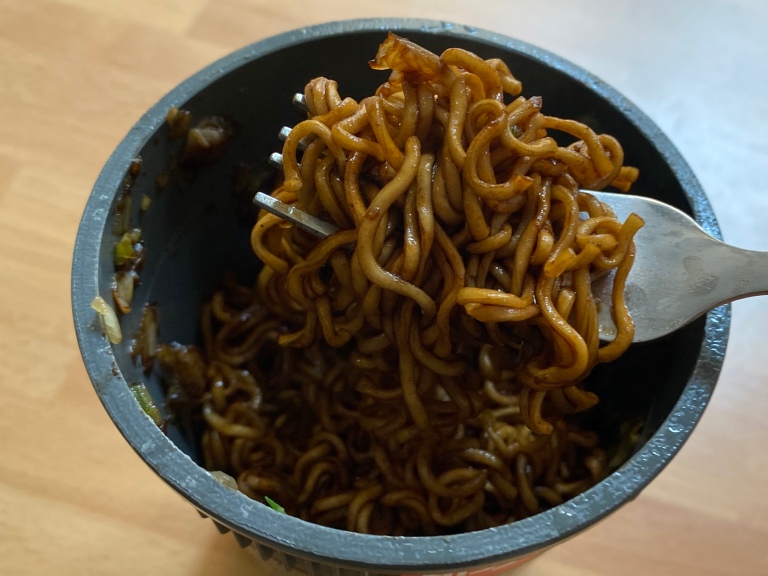
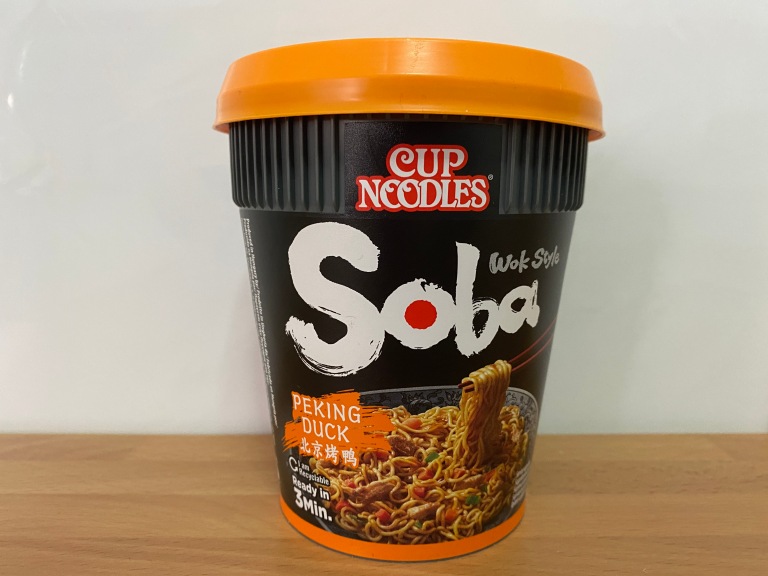

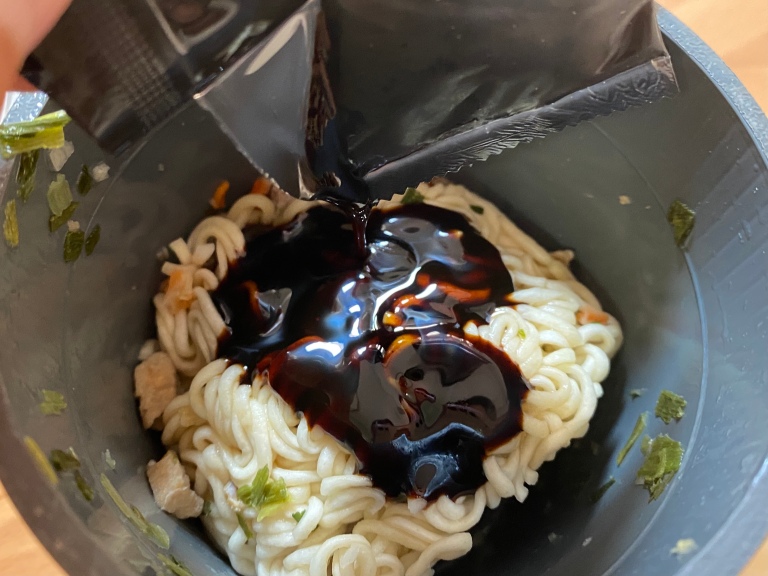
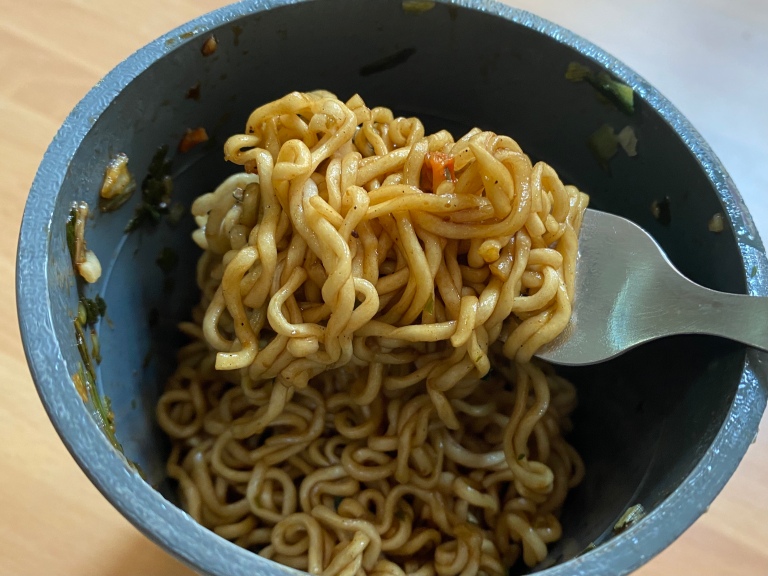
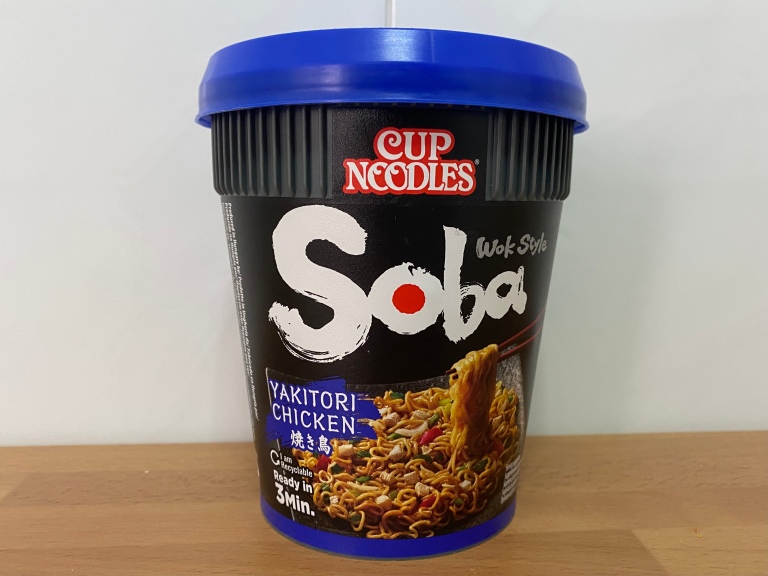
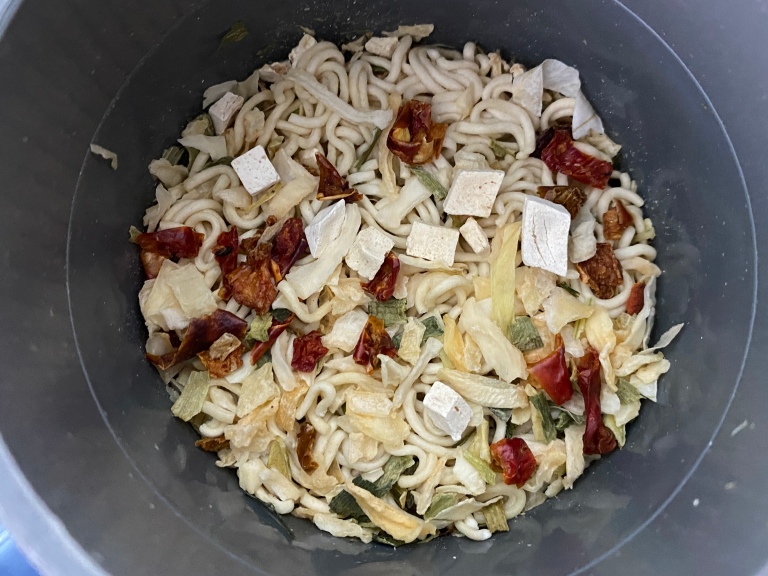

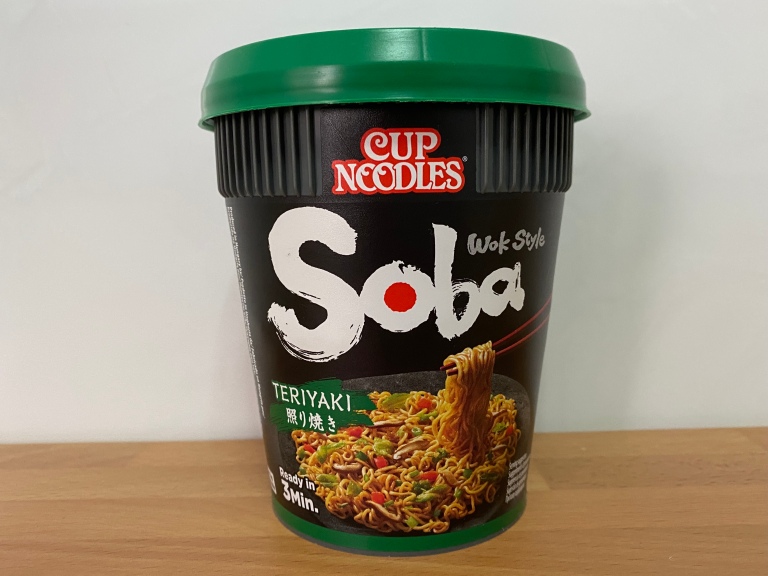
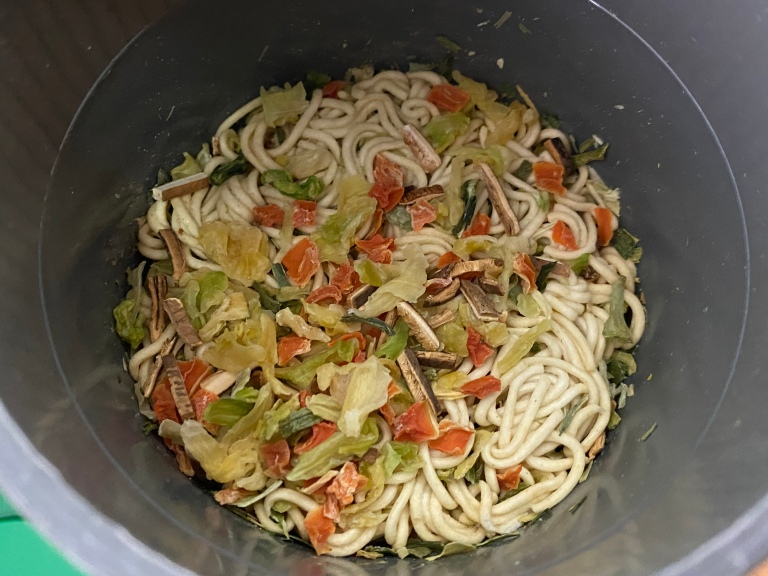
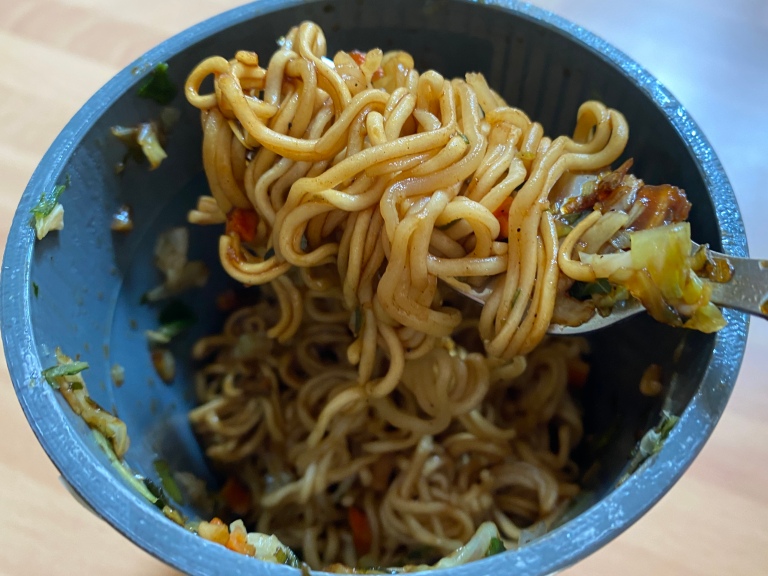
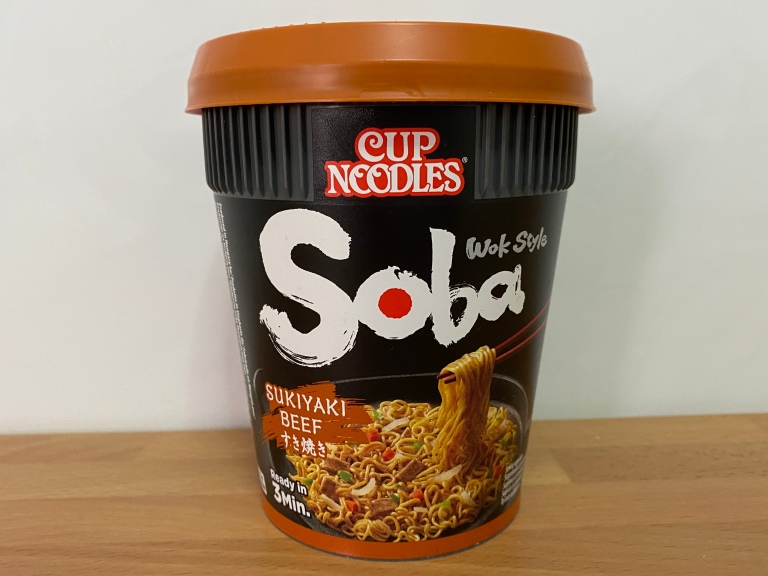
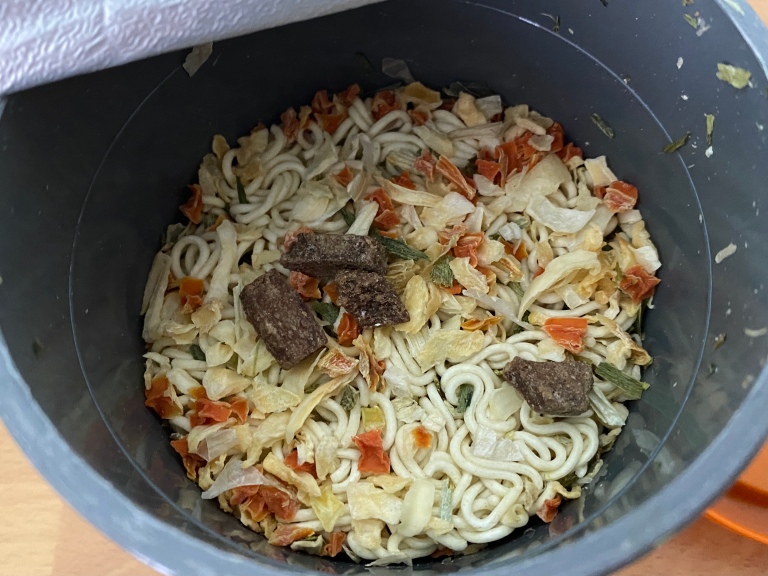
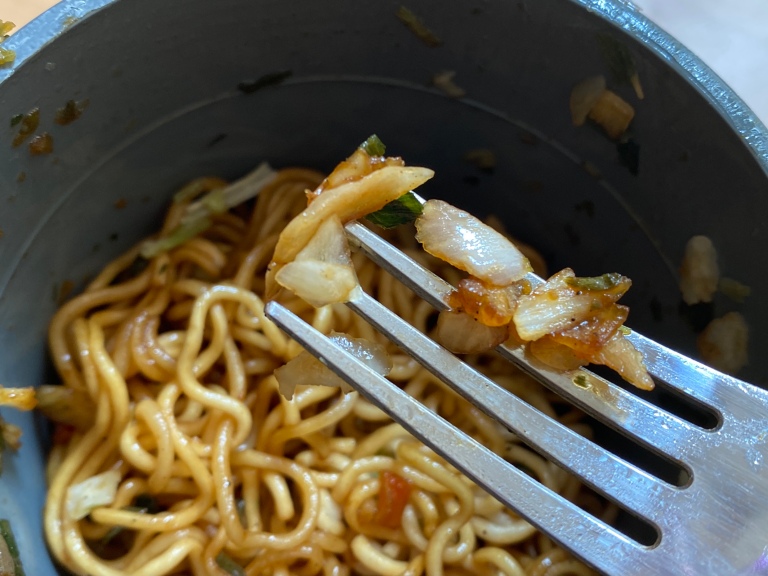
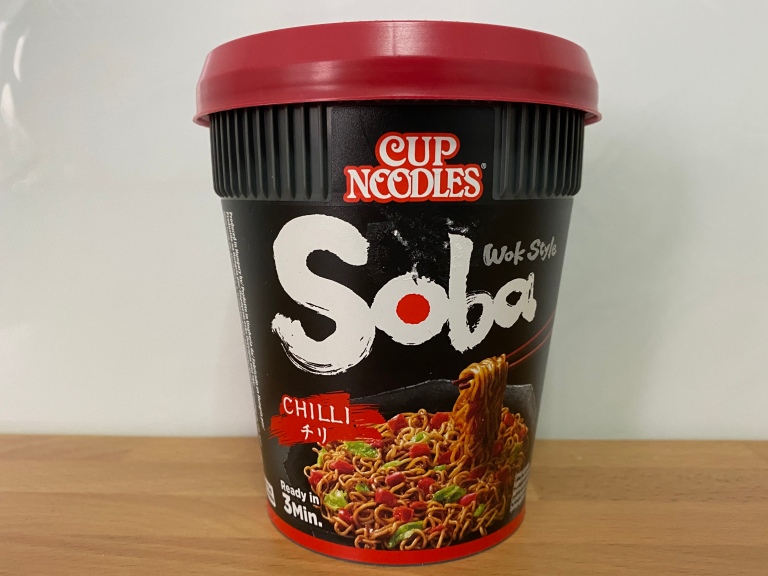

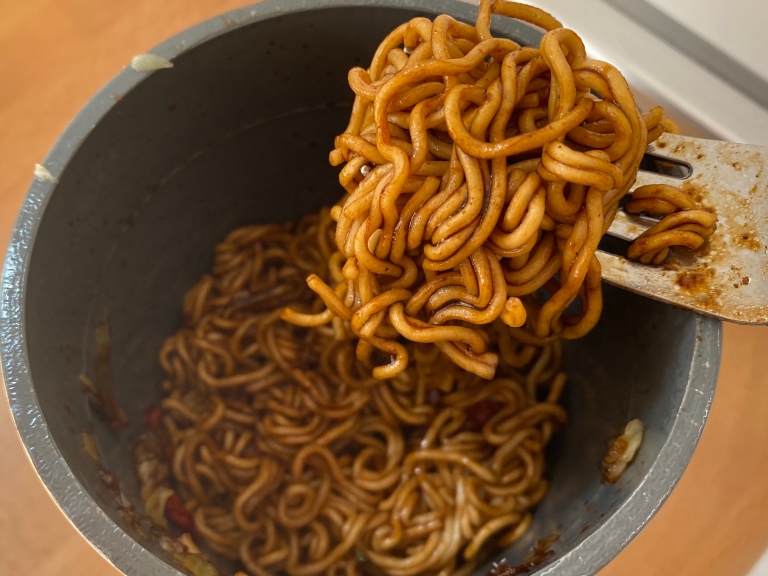
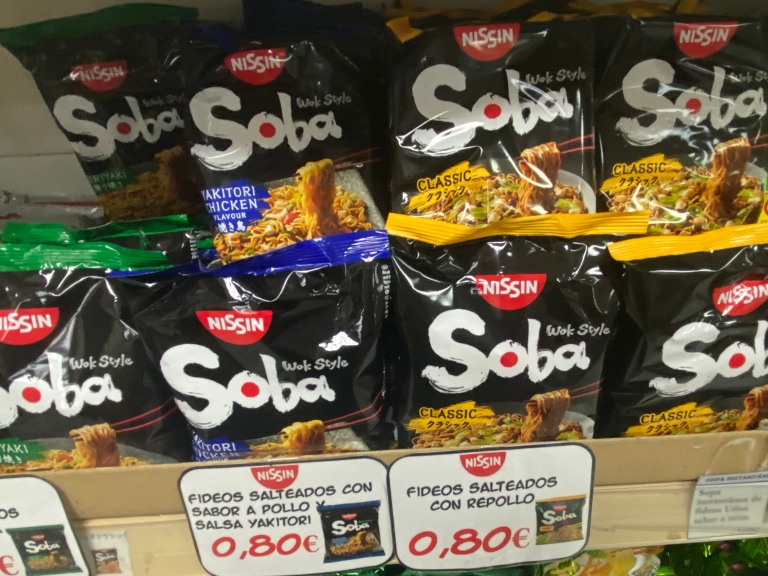
 We visit a ramen bar in Croatia, meet a whole new version of ramen we can’t wait to make at home
We visit a ramen bar in Croatia, meet a whole new version of ramen we can’t wait to make at home Our reporter orders food from Uber Eats, falls in love, learns that fate works in mysterious ways
Our reporter orders food from Uber Eats, falls in love, learns that fate works in mysterious ways One minute is all you need to make this popular instant noodle meal from Okayama【SoraKitchen】
One minute is all you need to make this popular instant noodle meal from Okayama【SoraKitchen】 Have you tried Tokushima ramen? No? You should (says our obsessed Japanese-language reporter)
Have you tried Tokushima ramen? No? You should (says our obsessed Japanese-language reporter) Hey, Croatian taxi driver! Take us to the restaurant with the best štrukli in Zagreb
Hey, Croatian taxi driver! Take us to the restaurant with the best štrukli in Zagreb McDonald’s new Happy Meals offer up cute and practical Sanrio lifestyle goods
McDonald’s new Happy Meals offer up cute and practical Sanrio lifestyle goods McDonald’s Japan releases a pancake pie for new retro kissaten coffeeshop series
McDonald’s Japan releases a pancake pie for new retro kissaten coffeeshop series Studio Ghibli glasses cases let anime characters keep an eye on your spectacles
Studio Ghibli glasses cases let anime characters keep an eye on your spectacles All-you-can-drink Starbucks and amazing views part of Tokyo’s new 170 meter-high sky lounge
All-you-can-drink Starbucks and amazing views part of Tokyo’s new 170 meter-high sky lounge The oldest tunnel in Japan is believed to be haunted, and strange things happen when we go there
The oldest tunnel in Japan is believed to be haunted, and strange things happen when we go there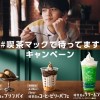 McDonald’s Japan goes old-school with new Showa-era Kissa Mac sweets lineup【Photos】
McDonald’s Japan goes old-school with new Showa-era Kissa Mac sweets lineup【Photos】 Studio Ghibli releases new action figures featuring Nausicaä of the Valley of the Wind characters
Studio Ghibli releases new action figures featuring Nausicaä of the Valley of the Wind characters Is the new Shinkansen Train Desk ticket worth it?
Is the new Shinkansen Train Desk ticket worth it? Kyoto’s 100 Demons yokai monster parade returns!
Kyoto’s 100 Demons yokai monster parade returns! Beautiful Sailor Moon manhole cover coasters being given out for free by Tokyo tourist center
Beautiful Sailor Moon manhole cover coasters being given out for free by Tokyo tourist center Disney princesses get official manga makeovers for Manga Princess Cafe opening in Tokyo
Disney princesses get official manga makeovers for Manga Princess Cafe opening in Tokyo More foreign tourists than ever before in history visited Japan last month
More foreign tourists than ever before in history visited Japan last month Starbucks reopens at Shibuya Scramble Crossing with new look and design concept
Starbucks reopens at Shibuya Scramble Crossing with new look and design concept Beautiful new Final Fantasy T-shirt collection on the way from Uniqlo【Photos】
Beautiful new Final Fantasy T-shirt collection on the way from Uniqlo【Photos】 Foreign English teachers in Japan pick their favorite Japanese-language phrases【Survey】
Foreign English teachers in Japan pick their favorite Japanese-language phrases【Survey】 Japanese convenience store packs a whole bento into an onigiri rice ball
Japanese convenience store packs a whole bento into an onigiri rice ball We try out “Chan Ramen”, an underground type of ramen popular in the ramen community
We try out “Chan Ramen”, an underground type of ramen popular in the ramen community Studio Ghibli releases Kiki’s Delivery Service chocolate cake pouches in Japan
Studio Ghibli releases Kiki’s Delivery Service chocolate cake pouches in Japan Japan’s bone-breaking and record-breaking roller coaster is permanently shutting down
Japan’s bone-breaking and record-breaking roller coaster is permanently shutting down New definition of “Japanese whiskey” goes into effect to prevent fakes from fooling overseas buyers
New definition of “Japanese whiskey” goes into effect to prevent fakes from fooling overseas buyers Our Japanese reporter visits Costco in the U.S., finds super American and very Japanese things
Our Japanese reporter visits Costco in the U.S., finds super American and very Japanese things Studio Ghibli unveils Mother’s Day gift set that captures the love in My Neighbour Totoro
Studio Ghibli unveils Mother’s Day gift set that captures the love in My Neighbour Totoro Foreign passenger shoves conductor on one of the last full runs for Japan’s Thunderbird train
Foreign passenger shoves conductor on one of the last full runs for Japan’s Thunderbird train Domino’s Japan now sells…pizza ears?
Domino’s Japan now sells…pizza ears? New Japanese KitKat flavour stars Sanrio characters, including Hello Kitty
New Japanese KitKat flavour stars Sanrio characters, including Hello Kitty Kyoto creates new for-tourist buses to address overtourism with higher prices, faster rides
Kyoto creates new for-tourist buses to address overtourism with higher prices, faster rides Sales of Japan’s most convenient train ticket/shopping payment cards suspended indefinitely
Sales of Japan’s most convenient train ticket/shopping payment cards suspended indefinitely Sold-out Studio Ghibli desktop humidifiers are back so Totoro can help you through the dry season
Sold-out Studio Ghibli desktop humidifiers are back so Totoro can help you through the dry season Japanese government to make first change to romanization spelling rules since the 1950s
Japanese government to make first change to romanization spelling rules since the 1950s Ghibli founders Toshio Suzuki and Hayao Miyazaki contribute to Japanese whisky Totoro label design
Ghibli founders Toshio Suzuki and Hayao Miyazaki contribute to Japanese whisky Totoro label design Doraemon found buried at sea as scene from 1993 anime becomes real life【Photos】
Doraemon found buried at sea as scene from 1993 anime becomes real life【Photos】 Tokyo’s most famous Starbucks is closed
Tokyo’s most famous Starbucks is closed One Piece characters’ nationalities revealed, but fans have mixed opinions
One Piece characters’ nationalities revealed, but fans have mixed opinions We asked a Uniqlo employee what four things we should buy and their suggestions didn’t disappoint
We asked a Uniqlo employee what four things we should buy and their suggestions didn’t disappoint Princesses, fruits, and blacksmiths: Study reveals the 30 most unusual family names in Japan
Princesses, fruits, and blacksmiths: Study reveals the 30 most unusual family names in Japan Our reporters try a yakiniku sauce called “Even Women Garlic” to figure out what that means
Our reporters try a yakiniku sauce called “Even Women Garlic” to figure out what that means We try cooking yakisoba with real Japanese buckwheat soba【SoraKitchen】
We try cooking yakisoba with real Japanese buckwheat soba【SoraKitchen】 Our Japanese language reporter gets lucky with Vietnam McDonald’s Prosperity Beef Burger
Our Japanese language reporter gets lucky with Vietnam McDonald’s Prosperity Beef Burger “Hey Singaporean taxi driver! Take us to the best restaurant in Singapore!”
“Hey Singaporean taxi driver! Take us to the best restaurant in Singapore!” McDonald’s breakfast menu in Hong Kong is like nothing we’ve ever seen in Japan
McDonald’s breakfast menu in Hong Kong is like nothing we’ve ever seen in Japan We try Thai and Indonesian “Ethnic” Cup Noodles, one of them tastes like spicy Fruit Loops
We try Thai and Indonesian “Ethnic” Cup Noodles, one of them tastes like spicy Fruit Loops We try a rotating sushi restaurant in New Delhi, are surprised to find no rotating sushi
We try a rotating sushi restaurant in New Delhi, are surprised to find no rotating sushi We make yakisoba hot sandwiches, the next trendy camping meal【SoraKitchen】
We make yakisoba hot sandwiches, the next trendy camping meal【SoraKitchen】 We visit a restaurant called ‘Otaku’ in France, eat some otaku sushi
We visit a restaurant called ‘Otaku’ in France, eat some otaku sushi We get our hands on a coveted Yodobashi lucky bag, this time the beauty and health gadget box
We get our hands on a coveted Yodobashi lucky bag, this time the beauty and health gadget box We get to be (probably) the first ever to try Nissin Cup Noodle’s latest creation: Gyoza ramen!
We get to be (probably) the first ever to try Nissin Cup Noodle’s latest creation: Gyoza ramen! Do people in Osaka really eat crunchy fried noodles with curry? We ask a local, then try it out
Do people in Osaka really eat crunchy fried noodles with curry? We ask a local, then try it out Ramen and girls bar: Where you can talk to women who aren’t dressed like hosts or maids
Ramen and girls bar: Where you can talk to women who aren’t dressed like hosts or maids We went out of our comfort zone and tried barbecued camel meat at a market in Morocco
We went out of our comfort zone and tried barbecued camel meat at a market in Morocco The top 10 most popular instant noodle brands at the start of 2021
The top 10 most popular instant noodle brands at the start of 2021 Regular cup noodle bowls not enough for you? Try this 2000+ calorie instant yakisoba instead!
Regular cup noodle bowls not enough for you? Try this 2000+ calorie instant yakisoba instead!
Leave a Reply